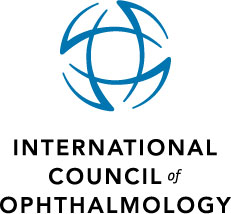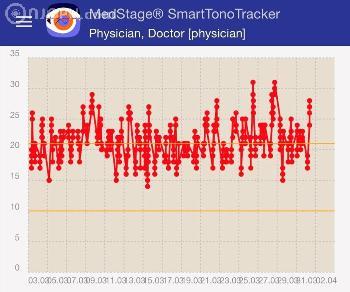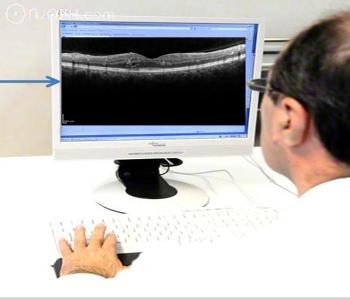| Ischemic Retinopathy after Presumed Branch Vein Occlusion (Mosaic, Colour Photogaphy Posterior Segment, FFA) | |
| Mosaic: Colour Photography Posterior Pole: nonperfused segment in superior temporal vein with collateral vessels, few intraretinal hemorrhages, no nerve fiber layer infarcts, no optic disc edema. Fluorescein angiography (FA): nonperfused segment of superior temporal vein with collateral vessels, peripherial retinal neovascularisation, peripheral capillary nonperfusion with more than 10 disc diameters of retinal capillary nonperfusion. Patient: 67 years of age, BVCA 0.3 at OD, 0.6 at OS, IOP 16/18 mmHg. General Medical History: arterial hypertension. Ocular Medical History: decreased vision in OD. Main Complaint: unclear vision loss. Purpose: to present peripherial ischemic retinopathy in mainly regular central fundus. Methods: Colour Photogaphy Posterior Segment, Optical Coherence Tomography, Fundus Fluorescein Angiography. Findings: Colour Photography Posterior Pole: nonperfused segment in superior temporal vein with collateral vessels, few intraretinal hemorrhages, no nerve fiber layer infarcts, no optic disc edema. Fluorescein angiography (FA): nonperfused segment of superior temporal vein with collateral vessels, peripherial retinal neovascularisation, peripheral capillary nonperfusion with more than 10 disc diameters of retinal capillary nonperfusion. Optical coherence tomography (OCT): decrease in foveal thickness, impaired inner segment/outer segment (IS/OS) junction, no macular swelling, no macular edema. Discussion: Retinal vein occlusion (RVO) is the second most common cause after diabetic retinopathy of vision loss due to retinal vascular disease. Branch vein occlusion (BRVO) is about 3-6 times more common than central vein occlusion (CRVO). Ho et al. (1) reported, that pooled data showed prevalence rates of about 0.52% for any RVO, 0.44% for BRVO, and 0.08% for CRVO. BRVO is caused by a combination of vein compression at arteriovenous crossings, degenerative changes within venous walls, and hypercoagulability. 34% of nonischemic retinal vein occlusion converted to the ischemic type. Kokolaki et al. (2) showed, that collateral vessels developed in 60% of patients 6±3 months after diagnosis. Literature: (1) Ho M, Liu DT, Lam DS, Jonas JB. RETINAL VEIN OCCLUSIONS, FROM BASICS TO THE LATEST TREATMENT. Retina. 2015 Dec 29. (2) Kokolaki AE, Georgalas I, Koutsandrea C, Kotsolis A, Niskopoulou M, Ladas I. Comparative analysis of the development of collateral vessels in macular edema due to branch retinal vein occlusion following grid laser or ranibizumab treatment. Clin Ophthalmol. 2015 Sep 3;9:1519-22 | |
| Riss, Judit, Dr.med., Augenklinik, Universitätsklinikum Erlangen, Erlangen, Deutschland, Erlangen, Deutschland; Michelson, Georg, Prof. Dr. med., Interdisziplinäres Zentrum für augenheilkundliche Präventivmedizin und Imaging, Augenklinik, Friedrich-Alexander-Universität Erlangen-Nürnberg, Erlangen, Deutschland | |
| H34.8 | |
| Netzhaut -> Vaskuläre Erkrankungen -> Venookklusive Erkrankungen der Retina -> Ischämische Retinopathie nach Venenastverschluß (Farbphotographie Hinterer Pol, OCT, FLA) | |
| 10365 |
|
|||||||||||||||||||||||||||
Ischemic Retinopathy after Presumed Branch Vein Occlusion (Mosaic, Colour Photogaphy Posterior Segment, FFA)-------------------------- -------------------------- -------------------------- -------------------------- -------------------------- -------------------------- -------------------------- -------------------------- -------------------------- -------------------------- -------------------------- -------------------------- |
|
||||||||||||||||||||||||||







